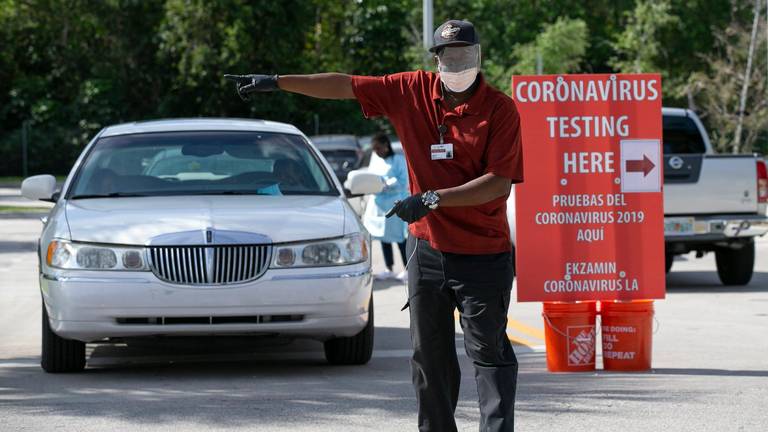
By Zachary Mack
Officials have long been promoting the use of increased coronavirus testing as a way to better tackle the spread of the virus. And while there may be some issues with accuracy, medical experts agree that testing is one of the best ways to detect and contain a new outbreak before it can get out of control. Now, a new study from the Office for National Statistics (ONS) in the U.K. shows why it’s particularly important to get frequently tested: 78 percent of people who tested positive for COVID-19 showed no symptoms when they got swabbed.
The study—which focused on a number of COVID-19 infections within private households, hospitals, nursing homes, and other institutions in England—shines a light on the importance of “silent spreaders,” patients with COVID-19 who continue to interact with others, unaware that they are actually contagious, the BBC reports. According to the research, 78 percent of respondents who had COVID-19 said they didn’t have symptoms on the day they got tested. That figure includes both pre-symptomatic patients, who eventually show signs of the virus, as well as asymptomatic patients, who never develop noticeable symptoms of the disease.

While the ONS was quick to point out that the test group of 120 patients made it too small to make strong conclusions as to who might be more likely to be infected, it’s clear “silent spreaders” have become a concern. COVID-19 patients without symptoms have become the focus of many studies on the coronavirus pandemic recently as scientists struggle to get a handle on how the disease can spread so quickly within communities. A May report from the Centers for Disease Control and Prevention (CDC) estimated that 40 percent of all coronavirus transmission happens from people who show no symptoms.
RELATED: For more up-to-date information, sign up for our daily newsletter.
As far as testing goes, Emily Landon, MD, an epidemiologist and infectious diseases specialist at the University of Chicago Medicine, told NPR in June that it takes at least three to five days after exposure to test positive for coronavirus.
So, if you’ve had close contact with someone with COVID-19 or if you’ve been in a high-risk situation, it’s worthwhile to get tested to find out. Just beware that you could get a false negative result. According to a June study published in the Annals of Internal Medicine, there are a high amount of false negatives among COVID test results, typically because the test is done either too early or too late in the patient’s illness. And for more on how COVID can attack your respiratory system, check out This Is How Coronavirus Will Most Likely Enter Your Body, Study Finds.
For more on this article go to: www.msn.com










